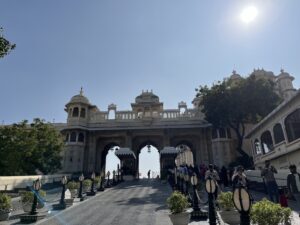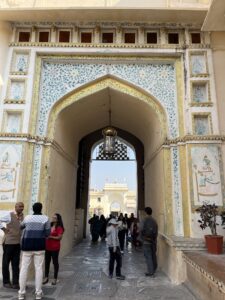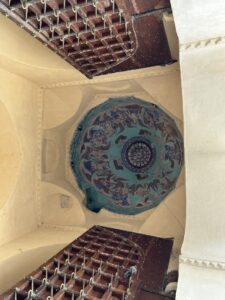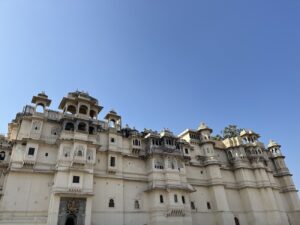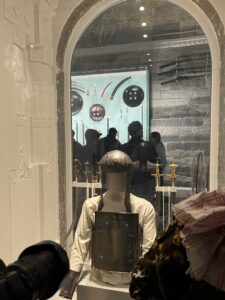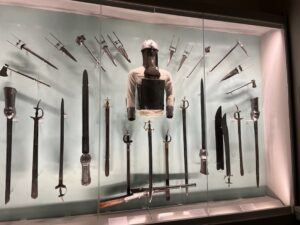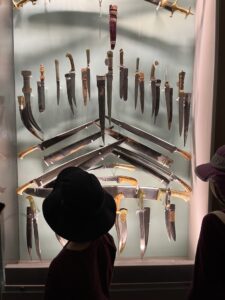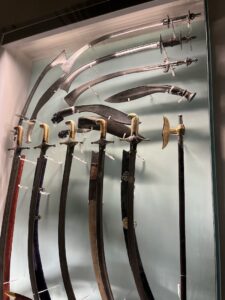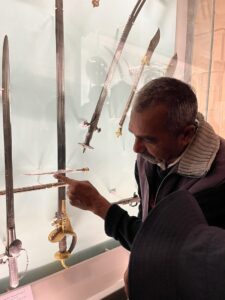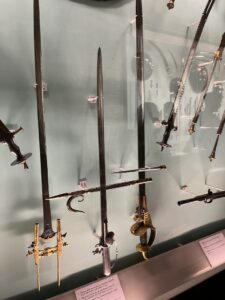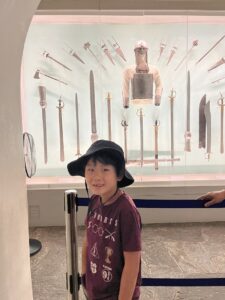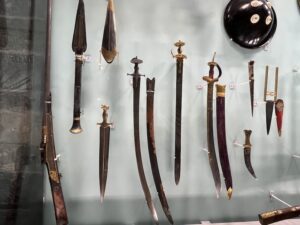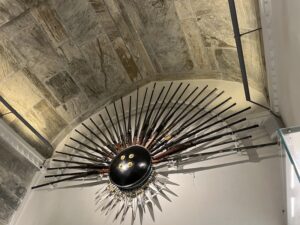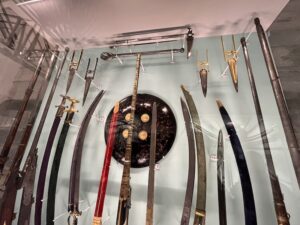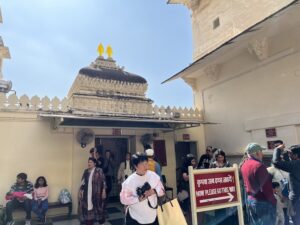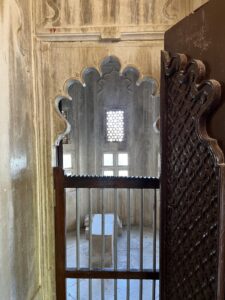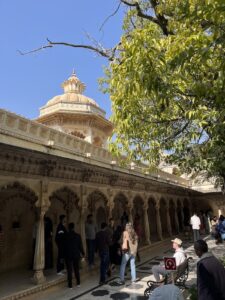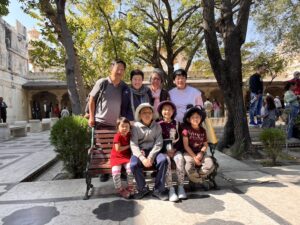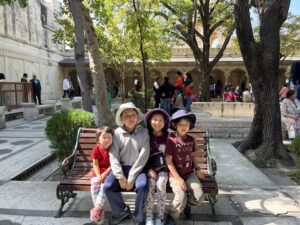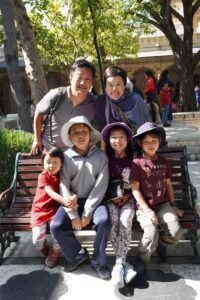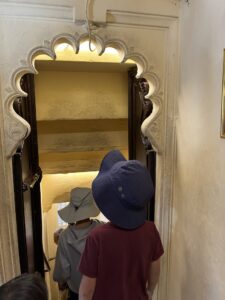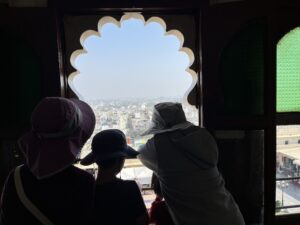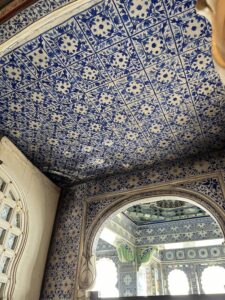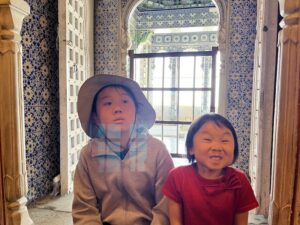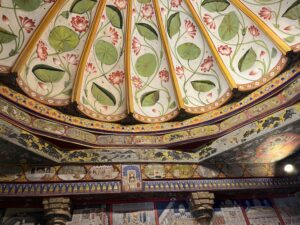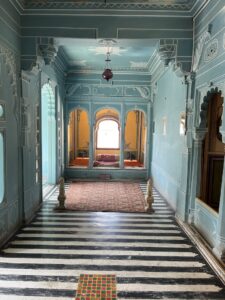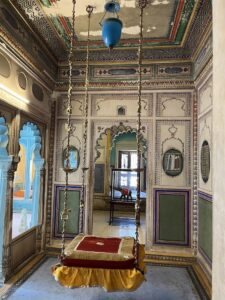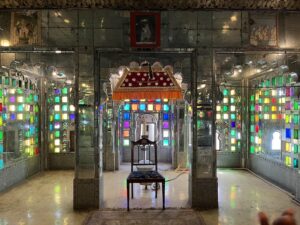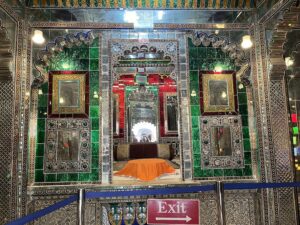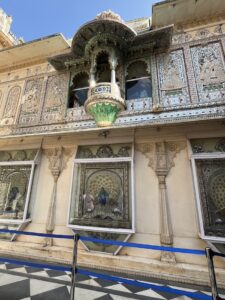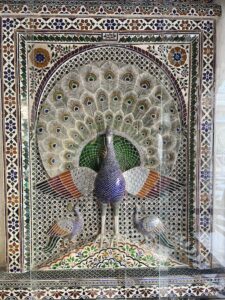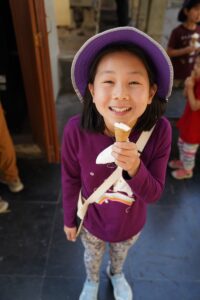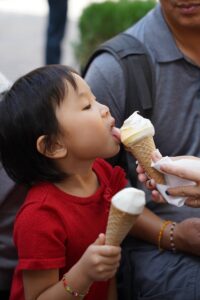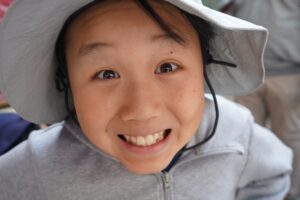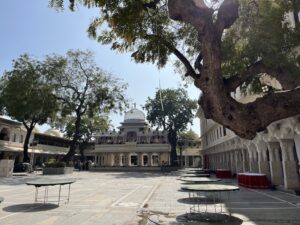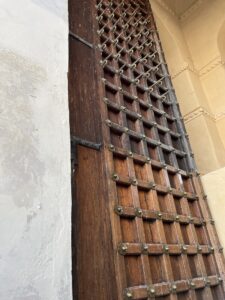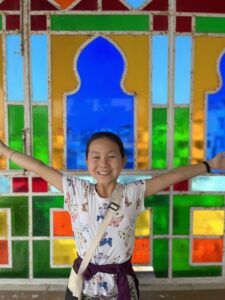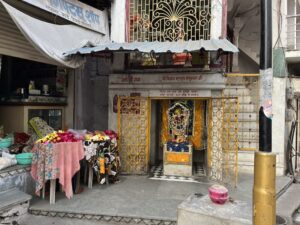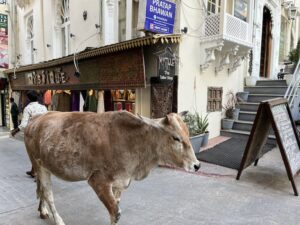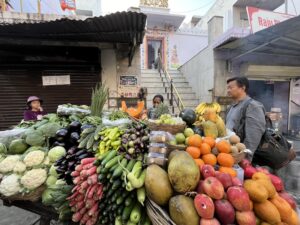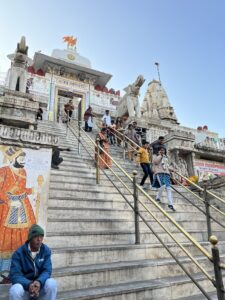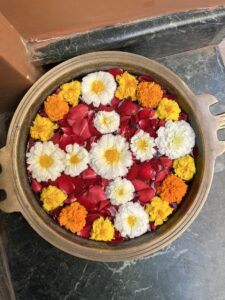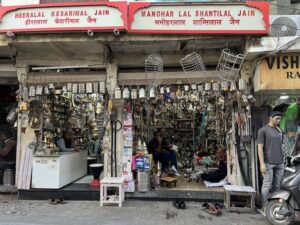Even though our enthusiasm for visiting another palace was low, particularly among the children, we had to pay the obligatory visit to the City Palace of Udaipur. This sprawling palace lies on the banks of Lake Pichola and was constructed over the course of 400 years beginning in 1559 by Maharana Udai Singh II, the founder of the city of Udaipur. Additions to the palace were made over the next few hundred years by various rulers of the Sisodia clan of Rajputs who built new palaces within the palace complex and added additional rooms and features to suit their tastes. Today, the City Palace is a dizzying amalgamation of more than 11 smaller palaces plus gardens, courtyards and terraces.
We entered the City Palace through the grand arches of the Tripolia Gate and stood in the Manek Chowk, a wide courtyard where royal processions, festivals and even elephant fights were once held. We admired the view of the exterior of the palace constructed of granite and marble and stopped by to see a small shrine dedicated to Lord Ganesha. This reminded me of the Ganesh Pol at Amber Fort where Hindu elements were blended seamlessly into the magnificent Mughal architecture.
We had barely started our tour with the local guide we picked up in front of the palace when RY and DY started their complaining. To keep them going, we promised that our first stop inside the palace would be the armory. Particularly for the boys, the promise of swords and guns were a good distraction from the boring (their word) history of the Mewar Kingdom and its line of rulers that the guide responsibly recited to us with exacting detail.
The armory museum is housed in the oldest palace along with rooms displaying other artwork and artifacts of the time period including sculptures, paintings and textiles. The armory museum contained all manor of weapons used during the Mewar Kingdom from the 16th to 20th century. DY took great interest examining the swords, daggers, guns and other fighting apparatus.
My favorite pieces included a small pistol fashioned into the shape of a fountain pen that could have belonged to James Bond. There was another curious weapon, a long stick with a small metal hand at the end used by soldiers on horseback to grab the collar of enemy soldiers from the back. We encountered a peculiar looking battle horse with an elephant nose attached to its muzzle. The guide explained that the horse was disguised as a baby elephant so it would not be attacked by the war elephants of the opposing side.
We stopped to rest in the shade of the Baadi Mahal, a garden surrounded by marble corridors located on the top level of the palace. This lovely and private garden was used by the royal family for religious events, birthday celebrations and small social gatherings. As we were taking our own photos, other Indian tourists asked if they could take photos of us as well. A few asked if they could take photos with us. We have already gotten used to this kind of celebrity treatment. I know this happens a lot with Caucasians and especially blond children, but it surprised me that even we were objects of fascination. Although China is not so far from India, many Indians have never seen a Chinese person before. They especially liked snapping photos of our kids.
We wove our way through a maze of corridors and doorways and arrived at the Manak Mahal or Ruby Palace where we saw a room made of squares of stained glass. Another room nearby was covered entirely of mirrors and glass.
We encountered a large gold sun symbol, Surya Chopad, that is significant in the Mewar culture because the sun was worshipped by the Mewars. The image of the sun could mean several things including the actual sun, a god (Surya) and a royal emblem. The Mewar rulers believed they were descended from the sun. On cloudy days, the royal family worshipped at the Surya Chopad for the sun to come out.
We arrived at Mor Chawk or Peacock Square where three peacocks depicted the three seasons – summer, winter and monsoon season. The images on the building are a glass mosaic made of 5000 pieces of colorful glass. This area was used to host important guests.
The guide left us at this point and we enjoyed some ice cream in one of the many courtyards.
We wandered around a bit on our own and stumbled upon the Zenana Mahal with its delicate domed top. There were preparations underway for an event that evening that involved the royal family. In the past, the Zenana Mahal was an area reserved for the royal women to hold gatherings, celebrations and rituals.
Having spent a few hours in the City Palace already, the children were impatiently reminding us that it was time to go. So we said goodybe to the City Palace and passed by the massive wooden doors with spikes, longer and sharper higher up, designed to deter elephants from breaking down the protective gates.
We enjoyed lunch at a rooftop restaurant with its own captivating stained glass windows that overlooked Udaipur. After lunch, we explored the streets of Udaipur with something to capture our interest around every corner.
Author
-

Song is the mother of four children. She and her family have stepped away from it all and in September 2023, began traveling the world while homeschooling. Song is an ABC (American born Chinese) and has an undergraduate degree from Cornell and an MBA from Harvard. She is an entrepreneur and an educator. Her hobbies include learning, traveling, reading, cooking and baking, and being with children.


